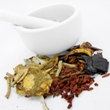
A recent review aims to provide more information on the classification system behind determining the safety of traditional Chinese medicine.
Chinese medicine is a broad term encompassing many different modalities and traditions of healing. They share a common heritage of technique and theory rooted in ancient Chinese philosophy (Taoism), elements of which are believed to date back over 5,000 years. The first recorded use of TCM is said to have been around 2,000 years ago.
Because TCM and Western medicine are used side by side in modern China, China is relatively advanced compared to Western countries in using the concept of "integrative medicine." TCM figures are prominently in treatment and planning of services, including for major illnesses such as cancer and heart disease. According to the World Health Organization (WHO), TCM is fully integrated into the Chinese health system with 95% of Chinese hospitals practicing it. As an example of such integration, it is common that children being treated with intravenous antibiotics are simultaneously treated with Chinese herbs in order to counteract the side effects of the antibiotic and boost the child's immune system.
According to the current review, many important drugs used in TCM are known to be potentially toxic, whether taken alone or in combination with other agents. In TCM, there are a variety of techniques to process and combine drugs with the goal of reducing toxicity in addition to enhancing beneficial effects.
The review states that currently, the toxicity classification system is based on traditional experience and ancient texts, as are traditional processing methods and the prohibition of the use of specific drug combinations. However, the authors state that new evidence is accumulating to help support the use of the classification system and processing methods to help decrease drug toxicity.
Although the authors emphasize that modern techniques are being used to evaluate TCM drug safety, a new system of classifying toxicity may need to be established. This may be particularly important in the case of herbal medicines that have potential toxicity that is delayed or otherwise hidden. This information may not have been incorporated into the traditional system of classification.
The authors conclude that their review may help explain the existing system of classification, using information that is often originally published and only available in China.
For more information about TCM, please visit Natural Standard's Health & Wellness Database.
The information in this brief report is intended for informational purposes only, and is meant to help users better understand health concerns. This information should not be interpreted as specific medical advice. Users should consult with a qualified healthcare provider for specific questions regarding therapies, diagnosis and/or health conditions, prior to making therapeutic decisions. Copyright © 2024 NatMed. Commercial distribution or reproduction prohibited. NatMed is the leading provider of high-quality, evidence-based, clinically-relevant information on natural medicine, dietary supplements, herbs, vitamins, minerals, functional foods, diets, complementary practices, CAM modalities, exercises and medical conditions. Monograph sections include interactions with herbs, drugs, foods and labs, contraindications, depletions, dosing, toxicology, adverse effects, pregnancy and lactation data, synonyms, safety and effectiveness.
